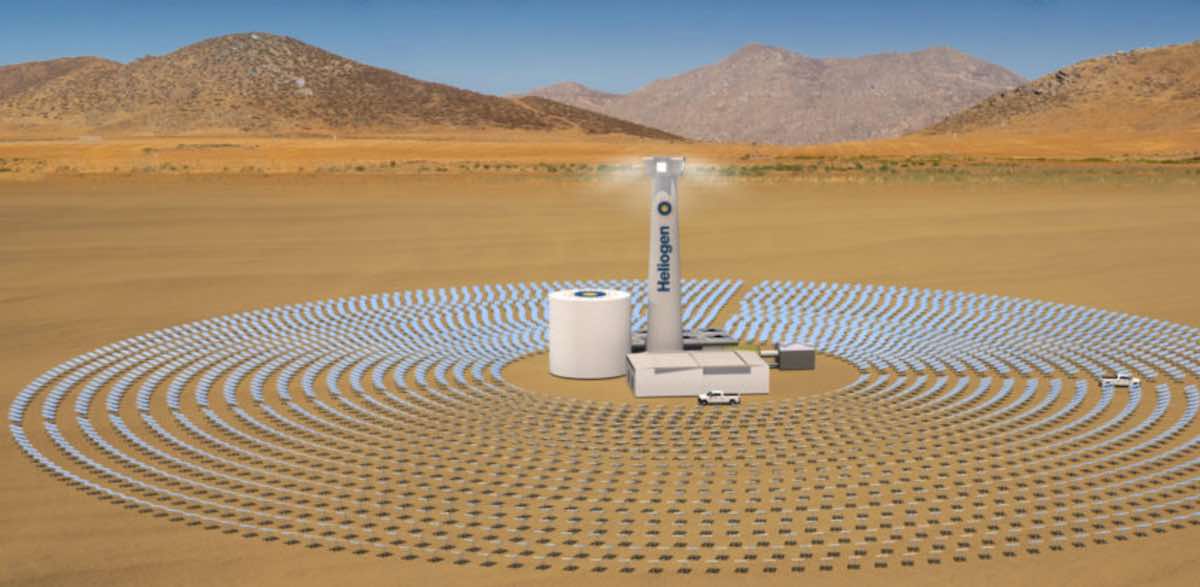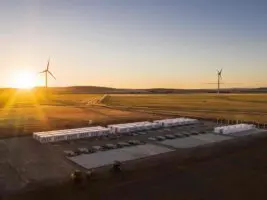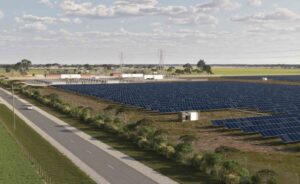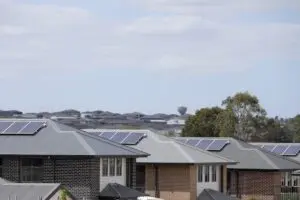Australia’s biggest gas producer Woodside Petroluem has announced plans to jointly market the concentrated solar energy technology of Bill Gates-backed company Heliogen, starting with a 5MW commercial-scale demonstration facility in California.
Heliogen said on Monday that it had been granted a Limited Notice To Proceed (LNTP) from Woodside’s wholly-owned US subsidiary to begin procurement of key equipment for a demonstration facility of its AI-enabled concentrated solar power technology.
The modular, “nearly 24/7” power solution uses computer vision software to precisely align mirrors to reflect sunlight to a single target on the top of a solar tower, enabling enabling low-cost storage in the form of high-temperature thermal energy.
Customers can then opt to build on the baseline system that provides industrial-grade heat by adding thermal energy storage systems, a turbine for power generation, and electrolysers for green hydrogen production, a statement said.
That last part of the equation is, in particular, where Woodside’s interests lie, with the gas major’s CEO Meg O’Neill citing Heliogen’s potential “key supporting role” in the development of its future renewable hydrogen and ammonia business.
“This is a significant step toward the development of our first facility with Heliogen, which we hope will be just the start of our ongoing collaboration,” O’Neill said in a statement.
“Heliogen’s innovative technology could play a key supporting role in development of Woodside’s zero-carbon hydrogen and ammonia business, which would rely on access to abundant and reliable renewable power.
“We are also excited about the marketing rights for Heliogen’s technology in Australia, where our abundant solar energy resources support application of this technology in remote power generation and other industrial processes.”
Heliogen says its technology is better than other CSP methods because it has managed to concentrate solar energy to exceed temperatures of more than 1,000 degrees celsius, which it calls a “singular scientific achievement.”
“At that temperature, Heliogen can replace the use of fossil fuels in critical industrial processes, including the production of cement, steel, and petrochemicals, dramatically reducing greenhouse gas emissions from these activities,” the company has said.
Woodside will need all the help it can get on this front, considering its planned Scarborough gas field is projected to produce emissions on a level equivalent to the annual pollution of 15 new coal-fired power plants.
On top of that, the gas major’s recent proposal to reduce emissions to net zero by 2050 mapped out a pathway that would allow for a more than doubling of its emissions, first.
As RenewEconomy reported at the time, the announcement made no mention of scope 3 emissions and did not make clear whether fugitive methane emissions were counted in the “net zero” promise.
Activist group the Australasian Centre for Corporate Responsibility (ACCR) said it was “dumbfounded” by the plan, which would double gas production at Woodside’s Pluto LNG facility and bring annual scope 3 emissions to 29 million tonnes of CO2 equivalent by 2026.
“Woodside’s claims that it is reducing carbon emissions, when in fact it is actually doubling its emissions at the Pluto LNG facility, is a feat of mental gymnastics that only Woodside could muster,” said the ACCR’s head of climate and environment Dan Gocher.
Under its proposed agreement with Heliogen, Woodside said it was considering establishing a roadmap to collaborate on additional potential renewables projects, including using Heliogen’s CSP technology to support power requirements at international locations.
“The arrangements under discussion include a framework to design, optimise and sell modularised industrial-scale and cost-competitive integrated renewable energy and hydrogen solutions in the US and marketing rights for Woodside in Australia,” the joint statement said, noting also that Heliogen’s technology had “a lot of potential” to power off-grid remote mines.
“Heliogen’s AI-enabled concentrated solar technology has the potential to transform heavy industry by turning sunlight into a zero-carbon source of heat, power and hydrogen that is nearly always available,” said Heliogen CEO and founder, Bill Gross.
“Although costs of large-scale solar are falling, conventional solar technologies are not yet cost-competitive with fossil fuels in most energy markets due to their intermittent availability.
“Heliogen’s technology aims to close this gap through the use of AI, software and thermal storage. As the energy sector is ripe for applications of green hydrogen fuels and decarbonisation strategies, Woodside is an ideal collaborator for our breakthrough solar technology, which will support the operational characteristics of heavy industry,” Gross said.
On top of its agreement with Woodside, Heliogen announced in March of this year that it was working with mining giant Rio Tinto to deploy its technology at California’s largest open pit mine, located in Boron. At the time, Heliogen claimed this was the first CSP technology used to power a mine in the US, and perhaps the world.
Woodside, meanwhile, has also recently tipped funds into Australian thermal energy storage company 1414 Degrees, to support the further development of its SiBox technology, which claims to be able to store renewable energy and release it as both heat and electricity, potentially opening up markets in industrial and district heating applications.
Woodside’s agreement with Heliogen coincides with the news that Norwegian oil giant Equinor had tipped $9 million into the Melbourne-based concentrated solar and hydro storage technology outfit RayGen Resources.
RayGen said on Monday that it had partnered with Equinor to close out the Series C capital raise, which had attracted a total of $55 million, including from Chevron Technology Ventures, the clean energy offshoot of US oil major, Chevron.










